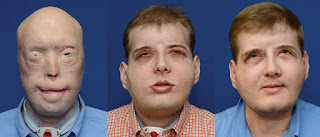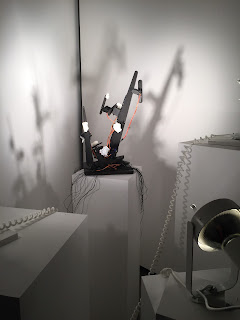Week 4: Medicine and Art

In this blogpost, I would like to focus on the topic of plastic surgery. In her lecture, Victoria Vesna talked about the history of plastic surgery. She mentioned how plastic surgery was used after World War I to repair faces. An example of that is seen today with the facial reconstruction (and one of the first face transplants) of Patrick Hardison, a fire fighter who was severely burned. His face has been completely reconstructed, showing the breadth of medical technology and innovation. Vesna also introduced us to ORLAN. ORLAN is an artist who considers her body to be a medium, like a readymade in some ways. She has undergone many plastic surgeries as performance art. In her documentary ‘Carnal Art’ she states: ‘My work is a critique on beauty and how cosmetic surgery is usually used’. She states that she also sees similarities between Catholic/ Church art and plastic surgery, the surgeon being a minister and the light shining on her face similar to the light shining on saints...

